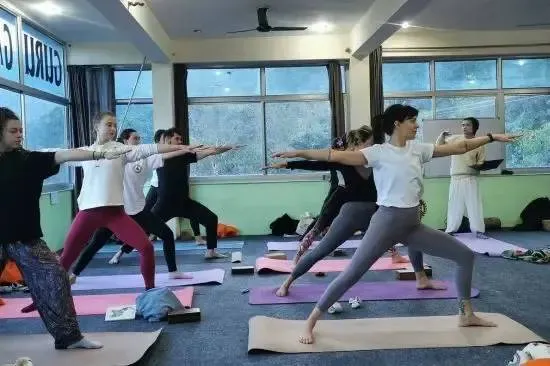Embarking on a yoga teacher training (YTT) program is a transformative journey, whether you’re looking to deepen your practice or start a career in teaching yoga. With countless programs available worldwide, selecting the one that best suits your needs can be overwhelming. This guide will walk you through the key factors to consider when choosing the ideal Yoga Teacher Training program.
- Define Your Goals and Intentions
The first step in choosing a YTT program is understanding your motivation. Ask yourself:
Are you pursuing training to enhance your yoga practice?
Do you aspire to teach yoga professionally?
Are you looking for a specific style or philosophy of yoga?
For instance, if you aim to teach, you’ll want a program that offers comprehensive teaching methodology and practical experience. If it’s self-growth and spiritual exploration, a program emphasizing yoga philosophy and meditation might be more suitable.
- Decide on a Yoga Style
Yoga encompasses various styles, each with its unique approach, philosophy, and physicality. Popular styles include:
Hatha Yoga: Great for beginners, focusing on basic poses and breathwork.
Vinyasa Yoga: A dynamic style emphasizing flow and movement.
Ashtanga Yoga: A structured, physically demanding sequence of postures.
Iyengar Yoga: Focused on alignment and precision using props.
Kundalini Yoga: Centers on energy work, spirituality, and breath. If unsure, opt for a multi-style training that introduces various approaches.
- Research Accreditation and Certification
Ensure the program is accredited by a recognized body like Yoga Alliance, International Yoga Federation, or a regional equivalent.
For most, a 200-hour YTT is the foundational program, while advanced practitioners may pursue 300-hour or 500-hour YTTs. If you’re considering teaching, Yoga Alliance registration often requires graduating from an accredited program.
- Evaluate the Curriculum
A quality Yoga Teacher Training program offers a balanced practical and theoretical knowledge mix. Look for programs covering:
Asanas (Postures): Alignment, benefits, and modifications.
Pranayama (Breathwork): Techniques for energy control.
Anatomy and Physiology: Understanding the body and preventing injuries.
Yoga Philosophy: Concepts like the Yoga Sutras and the Eight Limbs of Yoga.
Teaching Methodology: Sequencing, cueing, and hands-on adjustments.
Some programs also include niche topics like prenatal yoga, yoga therapy, or Ayurveda, which can add value depending on your interests.
- Consider the Location and Setting
The training location significantly impacts your experience. Options include:
Urban Studios: Convenient for those balancing training with daily commitments.
Retreat Centers: Immersive experiences in serene settings like Bali, India, or Costa Rica.
Local Options: Save on travel costs while staying connected to your community.
Choose a location that aligns with your schedule, budget, and lifestyle. For an authentic experience, consider training in yoga’s birthplace—India.
- Assess the Trainers’ Credentials
Your teachers play a vital role in shaping your Yoga Teacher Training experience. Research their qualifications, teaching experience, and specialties. A well-rounded teaching team with diverse expertise can enrich your learning.
Look for trainers who create a supportive, inclusive environment and embody the yogic lifestyle. Reviews and testimonials from past students can provide valuable insights.
- Evaluate the Schedule and Format
YTT programs vary in duration and format:
Intensive Programs: Typically 3–4 weeks long, ideal for immersive learners.
Extended Programs: Spanning several months, suitable for those with other commitments.
Online or Hybrid Options: Flexible for remote learners but may lack hands-on adjustments.
- Budget Considerations
YTT programs range widely in cost, from a few hundred to several thousand dollars. Consider:
Tuition Fees: Ensure the price reflects the quality of instruction and resources.
Accommodation and Meals: Often included in residential programs.
Travel Expenses: If training abroad.
Materials: Books, manuals, or props required for the course.
While affordability is important, prioritize programs offering value for money and long-term benefits.
- Read Reviews and Testimonials
Researching others’ experiences can provide valuable insights into a program’s quality and culture. Look for:
Detailed reviews on platforms like Yoga Alliance, Google, or social media.
Testimonials from alumni highlighting strengths and weaknesses.
Reach out to past graduates if possible, as they can provide firsthand perspectives.
- Trust Your Intuition
Finally, listen to your gut. If a program feels aligned with your values and goals, it’s likely the right fit. Don’t hesitate to contact program coordinators with questions—they should be approachable and transparent.
Conclusion
Choosing the ideal yoga teacher training program is a personal and significant decision. By clarifying your goals, researching thoroughly, and trusting your instincts, you can find a program that aligns with your aspirations and transforms your journey on and off the mat.





